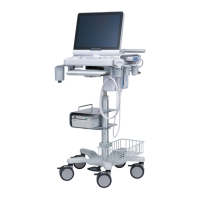How to fix Konica Minolta SONIMAGE HS2 Diagnostic Equipment when it cannot be turned on?
- MMatthew HooperAug 12, 2025
If the Konica Minolta Diagnostic Equipment system does not turn on, verify the following: * The battery status indicator LED on the mini console is lit or blinking. * The power switch LED is lit. * The AC adapter LED is lit. * The power cord and AC adapter are correctly connected. * The power supply cord is correctly connected to a wall-mounted AC socket outlet. If the issue persists, remove the AC adapter and battery, wait for at least 10 seconds, reinsert them, and then press the power switch.

